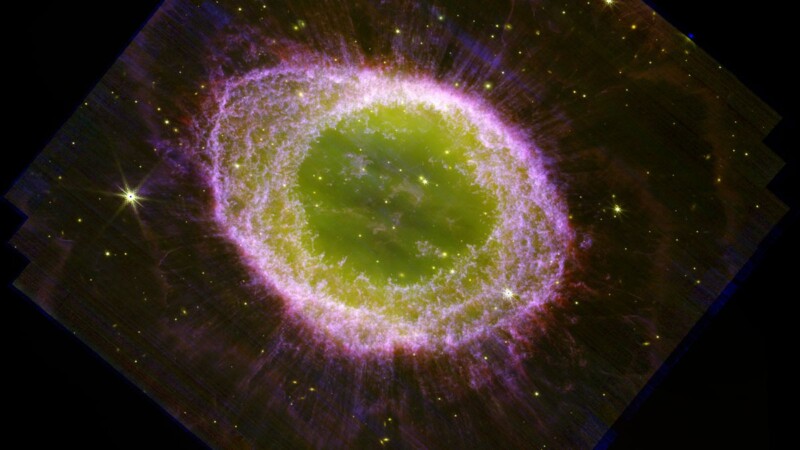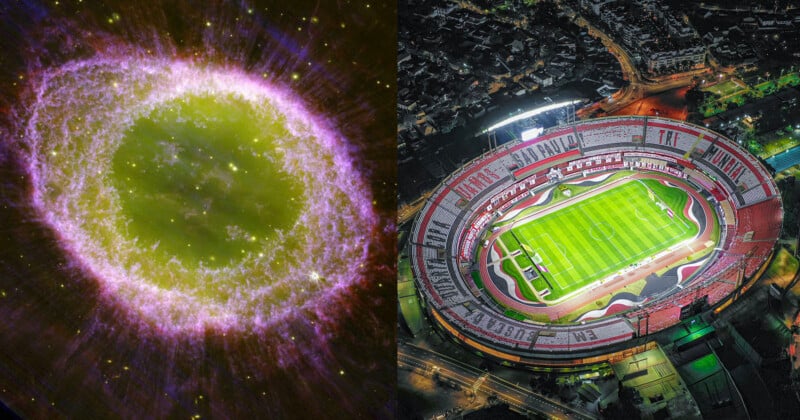James Webb Image of Ring Nebula Looks Like an Epic Sports Stadium

A new James Webb Space Telescope (JWST) image of the Ring Nebula that boasts an exquisite green looks like a sports stadium lit up at night at first glance.
The JWST image shows the Ring Nebula, also known as Messier 57, in never-before-seen detail. Located 2,600 light-years away from Earth, the nebula was born from the remnants of a dying star.
The long-dead star expelled stellar material from its center giving the Ring Nebula its stadium-like structure and glowing green and purple colors.
The Ring Nebula is a popular target for backyard astrophotographers but the incredible data collected by JWST will surprise astronomers who are familiar with the cosmic object.

“I first saw the Ring Nebula as a kid through just a small telescope,” says Jan Cami, Western University astrophysicist and core member of the JWST Ring Nebula Imaging Project.
“I would have never thought that one day, I would be part of the team that would use the world’s most powerful space telescope ever built to look at this object.”
Part of the intrigue and appeal around Messier 57 is the angle the nebula is tilted means it is viewed face-on from our vantage point on Earth.
“The James Webb Space Telescope has provided us with an extraordinary view of the Ring Nebula that we’ve never seen before,” Mike Barlow, University College London professor and co-lead scientist of the JWST Ring Nebula Imaging Project, tells Space.
“The high-resolution images not only showcase the intricate details of the nebula’s expanding shell but also reveal the inner region around the central white dwarf in exquisite clarity.”
A Future Image of Our Sun
In around five billion years’ time, the Sun will succumb to the same fate as the star that formed the Ring Nebula. When the Sun eventually explodes, it will consume the planets around it — including Earth.
What will be left behind will be something akin to the Ring Nebula meaning images like Webbs allow scientists to glimpse what will become of the the solar system.
“We are witnessing the final chapters of a star’s life, a preview of the sun’s distant future, so to speak, and JWST’s observations have opened a new window into understanding these awe-inspiring cosmic events,” adds Barlow.
“We can use the Ring Nebula as our laboratory to study how planetary nebulas form and evolve.”